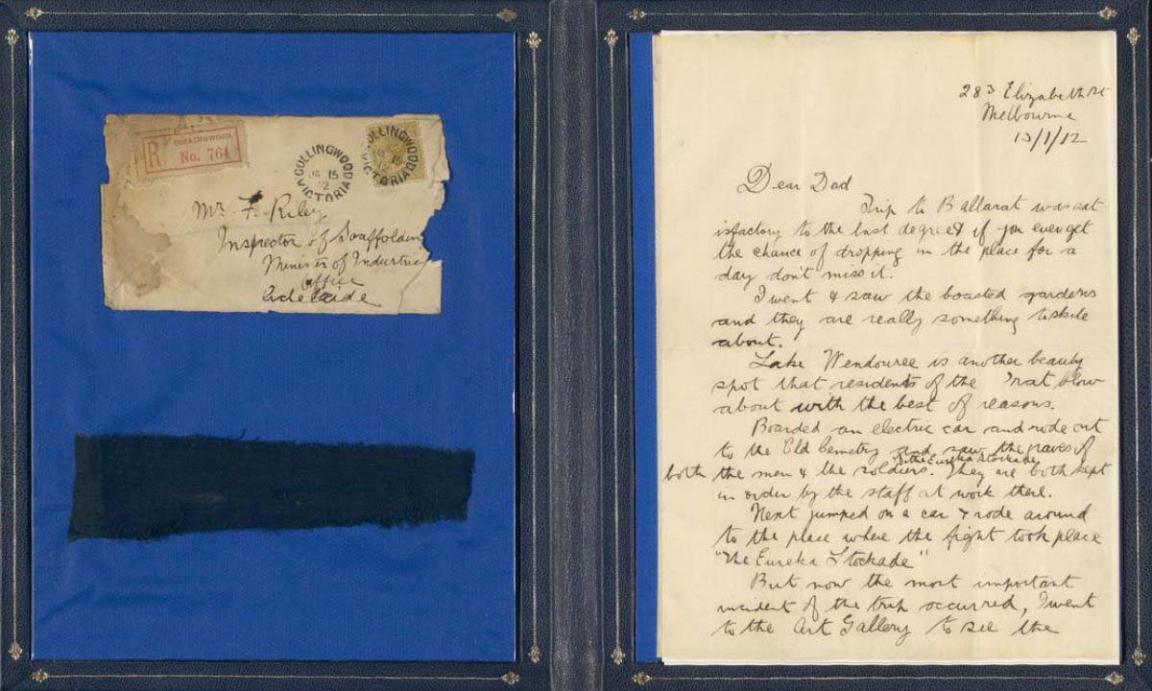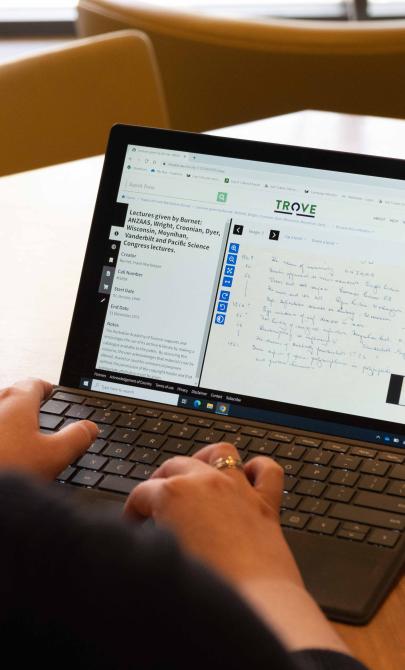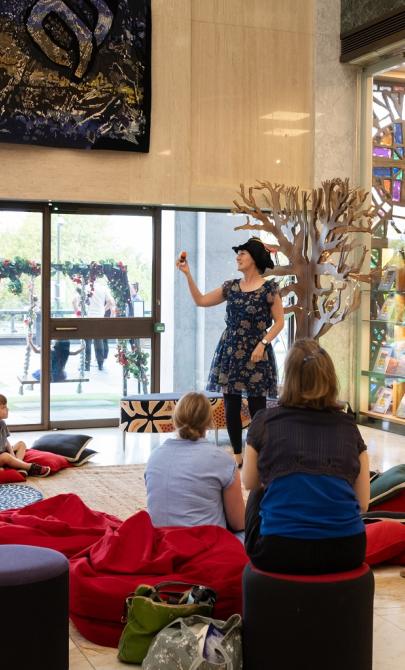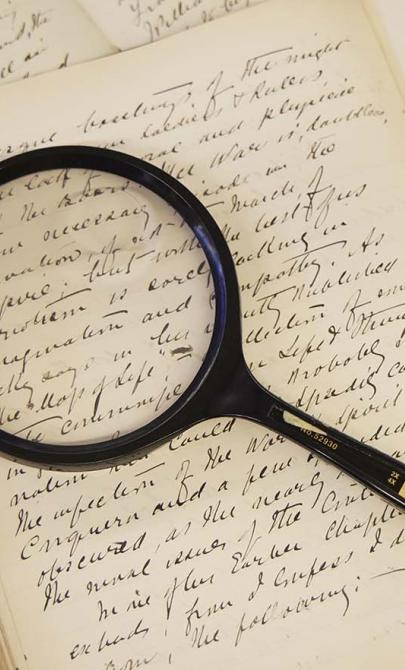Flag of the Southern Cross
The Eureka Rebellion
The Eureka Rebellion took place on 3 December 1854 and is sometimes referred to as Australia's only civil war. It was a short-lived but significant uprising by gold miners protesting the colonial government's licensing system and harsh enforcement practices.
Tensions had been building for months, but the battle itself lasted only 30 minutes. At least 22 miners and 6 troopers were killed during the confrontation. The event led to the establishment of a Royal Commission, which recommended reforms to the licence system and improvements to miners’ rights.
A symbol of resistance
The Eureka Flag is believed to have been sewn by 3 women, each married to a miner. It was made using wool, cotton and blended fabrics. The design features the 5 stars of the Southern Cross—a constellation that dominates the Australian night sky and symbolises unity and defiance.
In the days before the battle, the flag was raised on Bakery Hill during evening meetings that rallied support among miners. Under the flag, the men swore an oath:
We swear by the Southern Cross to stand truly by each other and fight to defend our rights and liberties.
Fragments of history
Although a large portion of the Eureka Flag survives today, about 40 per cent is missing or damaged. The surviving section was donated to the Art Gallery of Ballarat in 2001 and is currently on loan to the Museum of Australian Democracy at Eureka.
Much of the missing fabric was souvenired in the years after the rebellion—cut or torn off by troopers, soldiers, officials or members of the public. The number of surviving fragments is unknown. The piece held by the National Library is one part of a puzzle that may never be fully solved.

Portion of the flag flown by the miners at the Eureka Stockade, 1854, nla.gov.au/nla.obj-139600656
Portion of the flag flown by the miners at the Eureka Stockade, 1854, nla.gov.au/nla.obj-139600656
Learning activities
These activities encourage students to explore the causes and legacy of the Eureka Rebellion
Activity 1: Explore the lead-up to the Eureka Rebellion
Introduce the events leading to the Eureka Rebellion on 3 December 1854.
Explain the provenance of the flag fragment held in the National Library of Australia’s collection.
Activity 2: Interpreting the Riley letter
- Show students the letter that accompanied the Eureka Flag remnant.
- Use an interactive whiteboard or an enlarged print version to help them decipher the letter.
- Guide discussion with these questions:
- How did F.J. Riley acquire the piece of flag?
- What language does Riley use to describe tearing it off? What do those words suggest?
- What instructions does he give his father?
- Why might Riley want his father to take special care of the flag piece?
Activity 3: Investigating the flag remnant as a historical object
Prompt a class discussion using the following questions:
- How old is this item?
- What makes it significant or ‘a treasure’?
- What does this fabric represent?
- Why should it be preserved?
- What might we learn by closely examining it?
- What can this item tell us about the events of 1854?
- How did the rebellion shape Australia?
- What was life like for a miner in Victoria in the 1850s?
Activity 4: Research key figures and create a timeline deck
- Have students work alone or in pairs to research important people connected to the Eureka Rebellion.
- Suggested figures include Charles Hotham, Peter Lalor, James Bentley, James Scobie, Redmond Barry, and flag-makers Anastasia Hayes, Anastasia Withers and Anne Duke.
- Ask students to create ‘profile cards’ for display. Each card should include:
- A biography
- Their role in the rebellion
- A relevant image (if available)
- Use the cards to build a classroom timeline from 1851 to 1854.
Activity 5: Historical cost research
- A gold miner’s licence in 1854 cost 30 shillings.
- Ask students to investigate what items or services could be purchased for that amount in 1854.
- Use this as a prompt to discuss the financial pressures and inequalities miners faced.
Suggested related resource:
Other Treasures sources that relate to the concepts explored in this source include: The promise of gold



